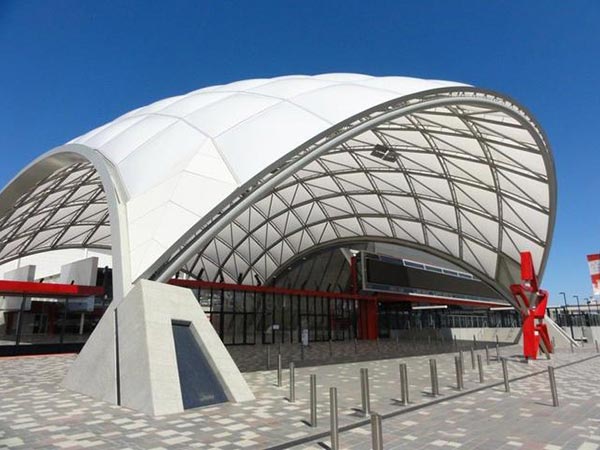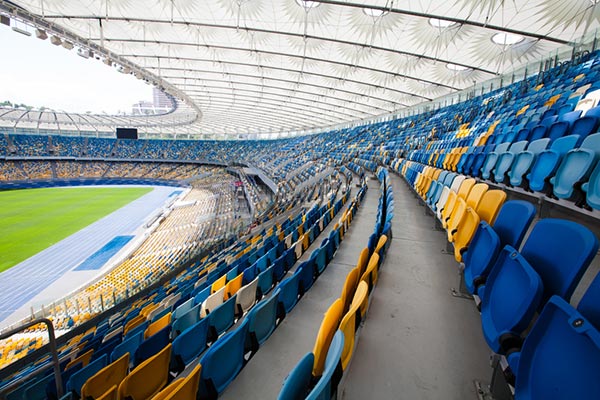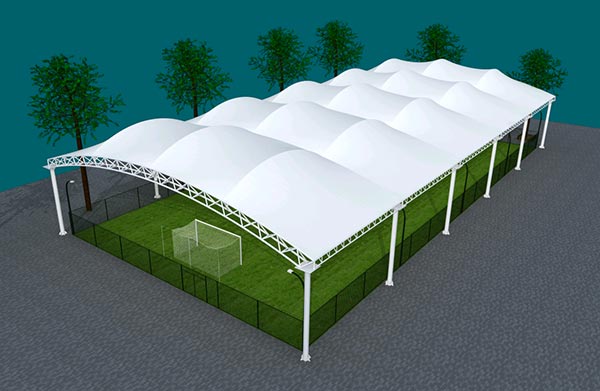What are the advantages of tensile structure buildings in terms of energy conservation?
With the acceleration of urbanization, the construction industry has an increasing demand for energy and resources and is also facing severe environmental challenges. Against this background, tensile structure buildings have become a breath of fresh air in the field of modern architecture with their unique design concepts, light structures and efficient energy-saving performance. This article will deeply explore the significant advantages of tensile membrane structure buildings in terms of energy saving and how to achieve green and sustainable building development.

1. High light transmittance reduces lighting energy consumption
One of the biggest features of tensile structure building is their highly transmissive film materials. This material makes full use of natural light, diffusing it evenly into the interior of the building, avoiding shadows and glare. During the day, good natural lighting can fully meet the needs of indoor activities, thereby reducing reliance on artificial lighting. Especially in long-span buildings, this advantage is particularly obvious and can save a lot of lighting electricity. In addition, at night, the tensile membrane structure building can present a soft and beautiful landscape effect under the illumination of light, which not only meets aesthetic needs, but also plays a role in advertising.
2. Optimize air flow and improve air conditioning efficiency
The design of tensile membrane structure buildings not only focuses on aesthetics and functionality, but also fully considers the impact of air flow on energy consumption. Through clever architectural design, tensioned structures can optimize air flow paths and increase the efficiency of air conditioning systems. In summer, natural wind can pass through the building smoothly, taking away indoor heat and reducing air conditioning load; in winter, by adjusting the building shape and opening positions, cold wind penetration can be reduced and the indoor temperature can be kept stable. This design not only improves the comfort of the indoor environment, but also significantly reduces energy consumption and carbon emissions.

3. Lightweight materials reduce resource consumption
Tensile structure buildings use lightweight materials, such as polymer membrane materials. These materials not only have excellent mechanical properties and durability, but also greatly reduce the demand for raw materials and the generation of waste during the construction process. Compared with traditional building materials such as masonry and concrete, the production, transportation and installation process of membrane materials are more environmentally friendly and can significantly reduce the overall energy consumption of the building. In addition, the modular design characteristics of membrane structure buildings make them easy to disassemble and reuse, further reducing resource waste and creating more possibilities for sustainable urban development.
4. Intelligent control system realizes energy-saving management
Tensile membrane structure buildings are usually equipped with intelligent control systems. These systems can monitor the temperature, humidity, lighting and other environmental parameters inside the building in real time, and automatically adjust the operating status of air conditioning, lighting and other equipment according to actual needs. Through intelligent energy-saving management, tensioned structure buildings can minimize unnecessary energy consumption and improve energy efficiency. At the same time, the intelligent control system can also provide convenient remote monitoring and data analysis functions, helping building managers better understand building energy consumption and formulate more scientific energy-saving strategies.
5. The perfect combination of artistic beauty and energy-saving performance
In addition to its energy-saving advantages, tensile structure buildings have also won widespread praise for their unique artistic beauty. Through ingenious design and innovative material application, membrane structure buildings can present rich and diverse light and shadow effects and visual experiences, making the building more beautiful, artistic and vital. This perfect combination of artistic beauty and energy-saving performance makes membrane structure buildings unique in the field of modern architecture and has become a model of green and sustainable architecture.

To sum up, tensile structure buildings have significant advantages in energy saving. Through measures such as highly transparent film materials, designs that optimize air flow, the use of lightweight materials, and intelligent energy-saving management systems, membrane structure buildings not only reduce energy consumption and carbon emissions, but also improve the comfort of the indoor environment. and the overall performance of the building. In the future, with the continuous advancement of technology and the enhancement of people’s environmental awareness, tensile membrane structure buildings are expected to be widely used and promoted in more fields, contributing more to the sustainable development of cities.